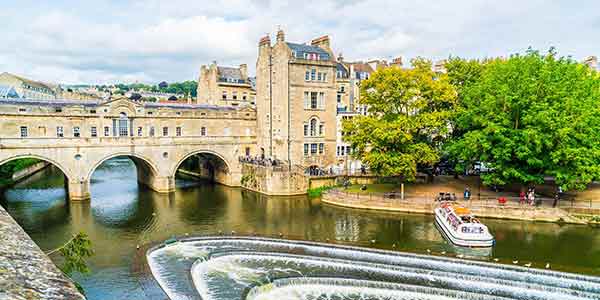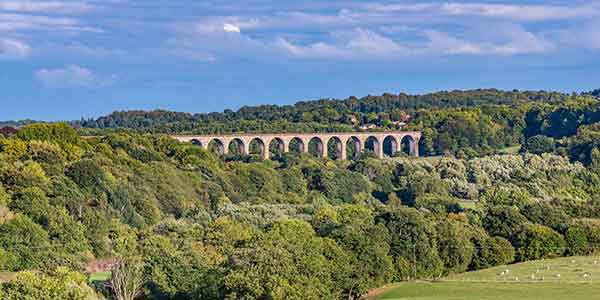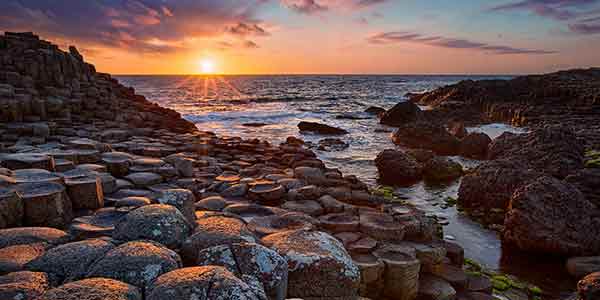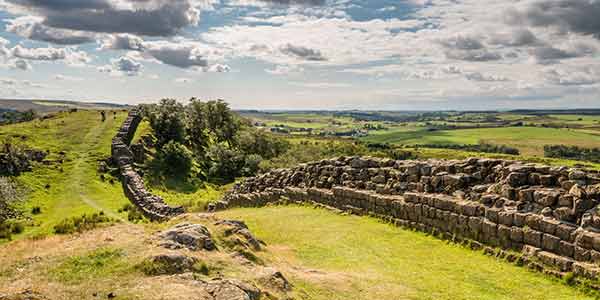
Our Sites
Pontcysyllte
It was inscribed as a World Heritage Site in 2009 and to be included on the World Heritage List, sites must be of outstanding universal value and meet at least one out of ten selection criteria. Pontcysyllte Aqueduct and canal meet the following three criteria:
- Criterion (i): The Pontcysyllte Aqueduct is a highly innovative monumental civil engineering structure, made using metal arches supported by high, slender masonry piers. It is the first great masterpiece of the civil engineer Thomas Telford and formed the basis of his outstanding international reputation. It bears witness to the production capacities of the British ironmaking industry, which were unique at that time.
- Criterion (ii): The intensive construction of canals in Great Britain, from the second half of the 18th century onwards, and that of the Pontcysyllte Canal in particular in a difficult region, bear witness to considerable technical interchanges and decisive progress in the design and construction of artificial waterways.
- Criterion (iii): The Pontcysyllte Canal and its civil engineering structures bear witness to a crucial stage in the development of heavy cargo transport in order to further the Industrial Revolution. They are outstanding representatives of its new technical and monumental possibilities.
Pontcysyllte Aqueduct and Canal are outstanding monuments of the canal age in the United Kingdom, which flourished from 1760s until the establishment of a network of locomotive railways form the 1830s. Canal building reached its zenith after 1790, during the so called ‘Canal Mania’ that saw 1,180 miles/1,900 kilometers of new waterways completed in just 20 years. The construction of a network of canals in Britain to provide transport for raw materials and goods represented a new phase in the history of inland navigation and was a fundamental factor in the Industrial Revolution, enabling and promoting rapid economic growth, regional specialisation and urbanisation.
Our Sites
Blaenavon
Blaenavon Industrial Landscape was inscribed as a World Heritage Site by UNESCO in 2000. UNESCO recognised that “The area around Blaenavon bears eloquent and exceptional testimony to the pre-eminence of South Wales as the World’s major producer of iron and coal in the nineteenth century.
Bath
UNESCO added The City of Bath as a ‘cultural site’ to its World Heritage List in 1987. Bath is included because of its Roman Remains, 18th Century Architecture, 18th Century Town Planning, Social Setting, Hot Springs and Landscape Setting.
Pontcysyllte
Pontcysyllte Aqueduct and canal consists of a continuous group of civil engineering features from the heroic phase of transport improvements during the British Industrial Revolution. The canal brought water borne transport from the English lowlands into the rugged terrain of the Welsh uplands, using innovative techniques to cross two major river valleys and the ridge between them.
Giants Causeway
The Giants Causeway and Coastline is a spectacular area of global geological importance on the sea coast at the edge of the Antrim plateau in Northern Ireland. The most characteristic and unique feature of the site is the exposure of some 40,000 large, regularly shaped polygonal columns of basalt in perfect horizontal sections, forming a pavement.
Hadrian’s Wall
Hadrian’s Wall is an exceptional example of a linear Roman frontier, encompassing an extensive archaeological landscape which reflects the way resources were deployed in the north western part of the Roman Empire and which displays the unifying character of the Roman Empire, through its common culture.






